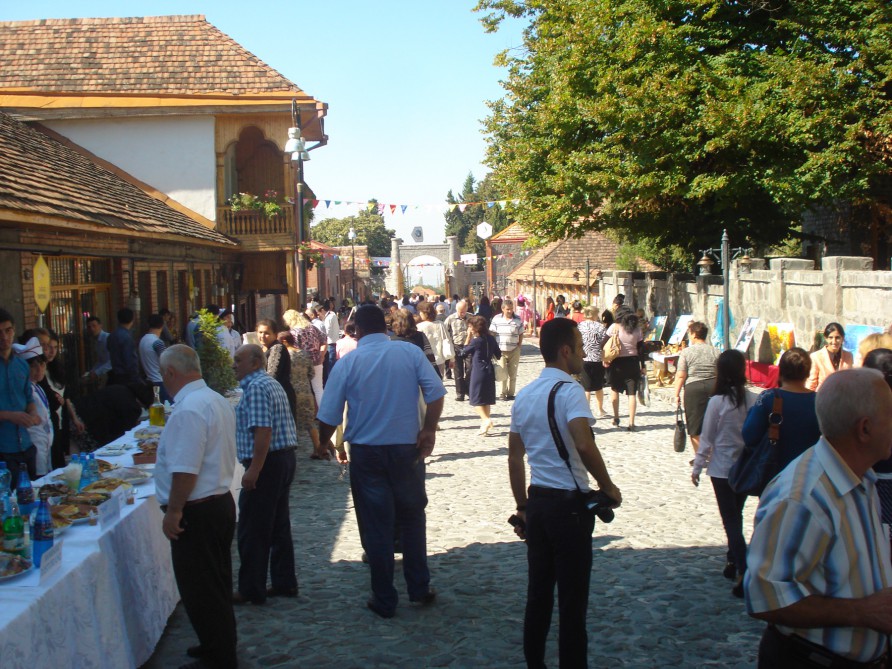National cuisine attracts many people to Gakh festival

By Amina Nazarli
Azerbaijan’s picturesque region of Gakh, which was declared “The capital of the Azerbaijani national cuisine” in 2015, hosted the “Ancient Taste” festival on September 22.
The festival was organized by the Culture and Tourism Ministry and brought together local chefs from the country’s regions including Balakan, Zagatala, Sheki, Oguz, Gabala, and Ismayilli.
Different samples of delicious dishes were put on display at the region’s “Icheribazar” Tourist and Cultural Center and Nizami Park.
The festival, which drew local residents and tourists, featured national dishes, different kinds of plov, dolma, and various types of sweets.
Speaking at the ceremony, the head of the Gakh region Executive Power, Musa Shekiliyev, and the head of the department at the Culture and Tourism Ministry, Fikret Babayev, noted the importance of the event.
Director General of the Azerbaijan National Cuisine Center, Tahir Amiraslanov, in turn, said the festival plays a significant role in the promotion of cuisine from Azerbaijan’s various regions.
The festival is aimed at the protection of intangible cultural heritage, the promotion of folk art, national traditions, folk arts and crafts, and showcasing the tourist potential of the regions.
Situated in the northwest of Azerbaijan near the border with Georgia, Gakh features a wide array of natural attractions.
Thermal mineral sulfur springs around the region have medicinal properties. Thousands of people from all over the world come here to heal and enjoy the region’s natural beauty, its fairy-tale forest, waterfalls, and raging rivers.
The Ram-Ram waterfall, which is the highest in Azerbaijan, is also located here.
Gakh is also famous for its numerous historical monuments, castle ruins, and towers.
The region is located in a part of Azerbaijan where one can see
a number of ancient Albanian temples -- these are first churches in
the Caucasus and some of the first churches in the world.
Gakh is know for its round church in Gum village, the unique Gum
basilica, ruins from buildings dating back to the 5-7 centuries,
and the 18th century Sirtgala fortress. There is also a
complex of majestic temple buildings from the 5-6 centuries in
Lekit village.
--
Amina Nazarli is AzerNews’ staff journalist, follow her on
Twitter: @amina_nazarli
Follow us on Twitter @AzerNewsAz
Here we are to serve you with news right now. It does not cost much, but worth your attention.
Choose to support open, independent, quality journalism and subscribe on a monthly basis.
By subscribing to our online newspaper, you can have full digital access to all news, analysis, and much more.
You can also follow AzerNEWS on Twitter @AzerNewsAz or Facebook @AzerNewsNewspaper
Thank you!
